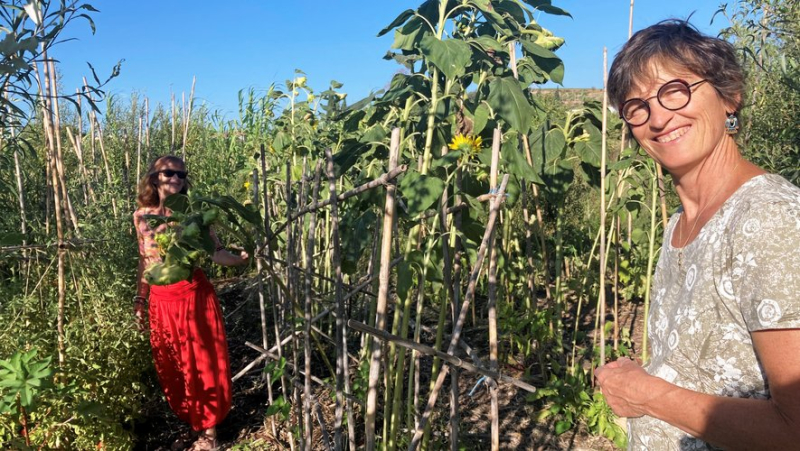Syntropic agriculture: a solution to combat climate change

Lydie et Véronique creusent le sujet dans un jardin ouvert à l’expérimentation collective. Midi Libre – JEROME MOUILLOT

Lucas Bernicot accompagne et forme les agriculteurs. Midi Libre – JEROME MOUILLOT
Au Mas de Sauvy, à Nébian, des agriculteurs prônent un changement de paradigme en expérimentant des techniques inspirées de l’agriculture brésilienne.
Like a “Little corner of Paradigm*”. The “vegetable garden” plot presents an alternation of rows of woody plants, vegetables, sunflowers, fruits, tomatoes… in a profusion of plants. An apparent vegetable jungle whose organization is, in reality, carefully thought out. Around it, a hedge of reeds and willows protects the crops. “It is the “shell” that protects us from the wind which, here, is terrible. By avoiding too rapid evaporation, it also allows us to recreate small water cycles. In a natural system, a water molecule circulates through seven different plants before exiting the system. Here we are trying to recreate a microclimate”, explains Véronique Barraud*. The farmer, owner of Mas de Sauvy, in Nébian, has opened her garden to collective experimentation by volunteers who wish to familiarize themselves with syntropic culture. On Wednesday evening, the subject was the focus of attention of around forty people who came to attend the conference dedicated to syntropic agriculture.
A technique that stimulates a natural ecosystem
A specialist in the field, Lucas Bernicot*, on tour in France, reveals the broad outlines of a cultivation method inspired by Brazilian techniques. So, what is syntropic agriculture?? “It is an agriculture also called successional agroforestry agriculture. It aims to create nourishing agro-ecosystems that mimic the functioning of a natural ecosystem in terms of dynamics, stratification and functioning”, summarizes the trainer in one go. A paradigm shift therefore that “is in line with what permaculture had already begun to popularize. It is a solution to climate change because it allows for massive carbon recapture. Here, we cultivate on a multi-level system. And we reintegrate a lot of trees into the system. It is a response that allows us to regenerate the ecosystem while cultivating to feed ourselves."
A necessary adaptation
Of course, the Mediterranean arc does not benefit from the same conditions as the tropics. ” In temperate climates, we are still in the experimental phase. Some farms are starting to move to a professional stage. ” Logically, it is easier to launch production directly in syntropics. But, “we can, for example, adapt a classic conventional orchard to gradually lead it towards syntropic agriculture.” And even viticulture could be conducive to conversion. ” This is completely transposable to viticulture. An example is currently developing, near Agen, with trees used as tutors…"
Enough, perhaps, to grow a new generation of farmers.
Véronique Barraud is secretary of the association Un petit coin de paradigme. Lucas Bernicot is part of the association Destination Syntropie, a French-speaking network of syntropic agriculture. I subscribe to read the rest



